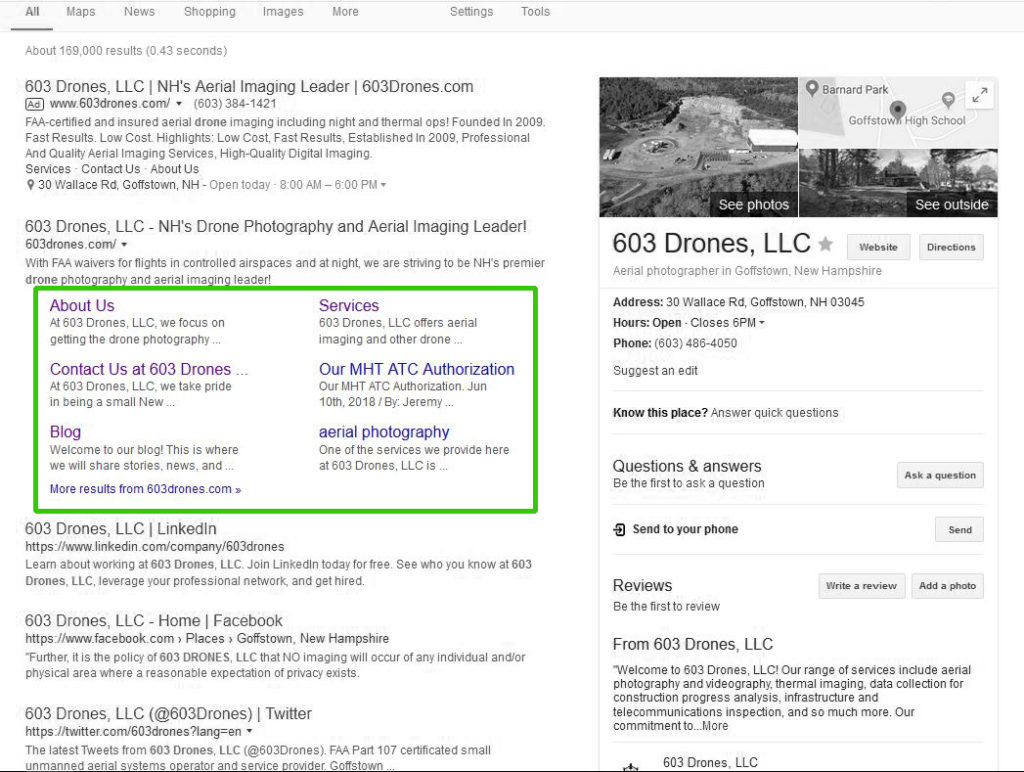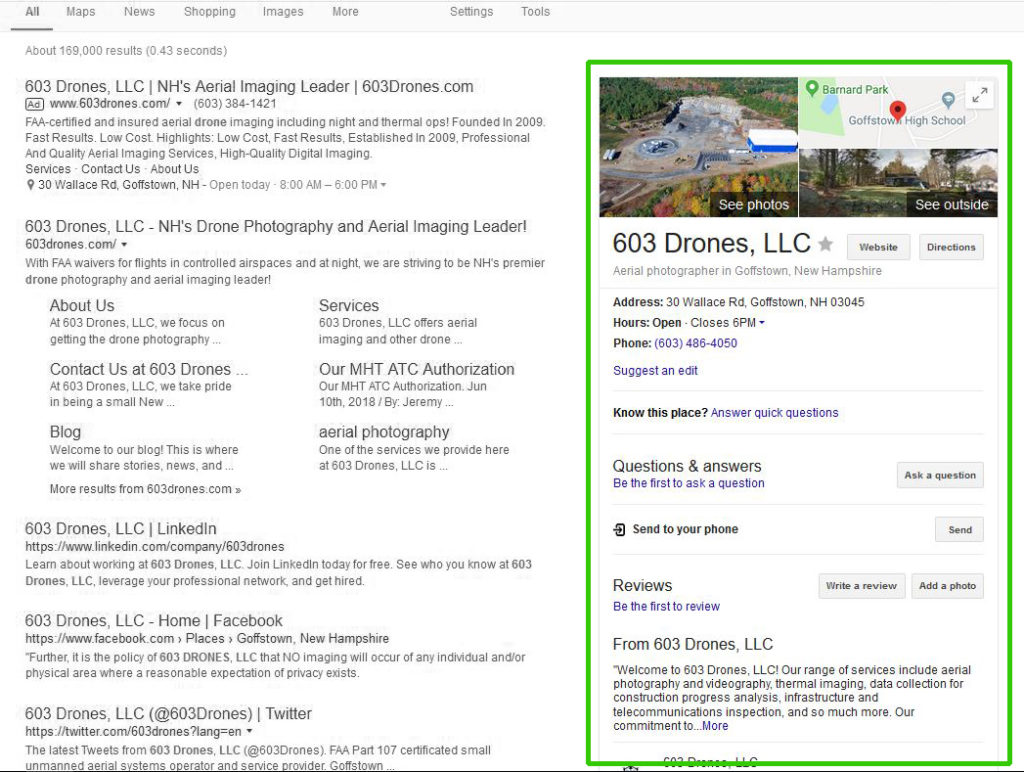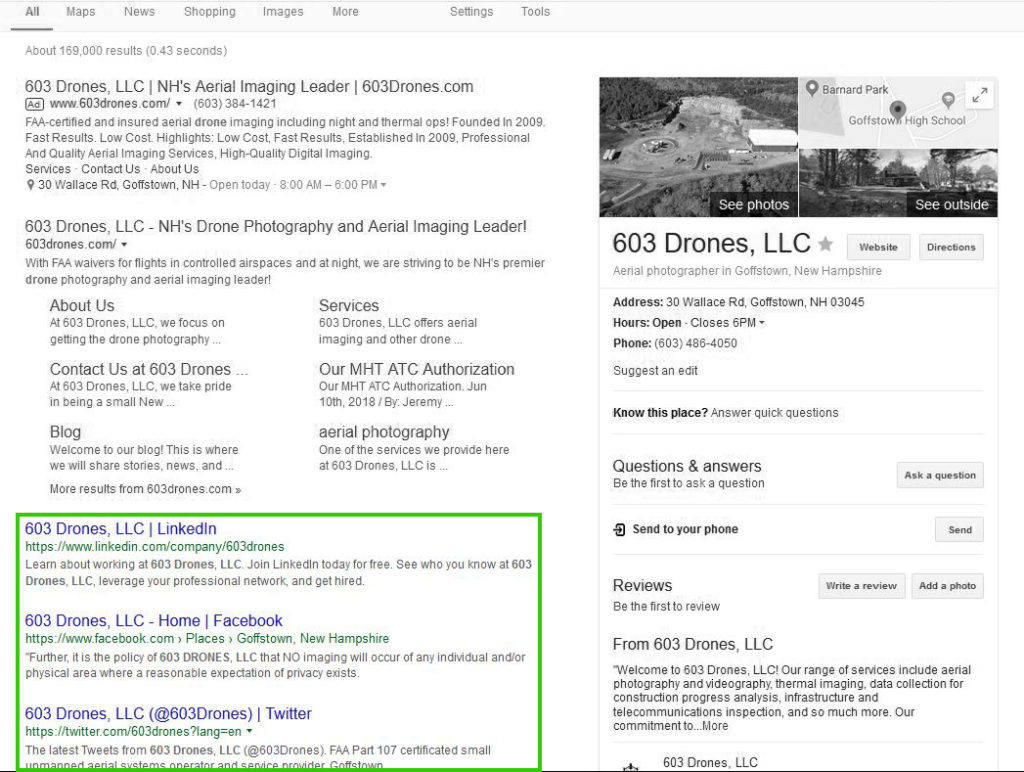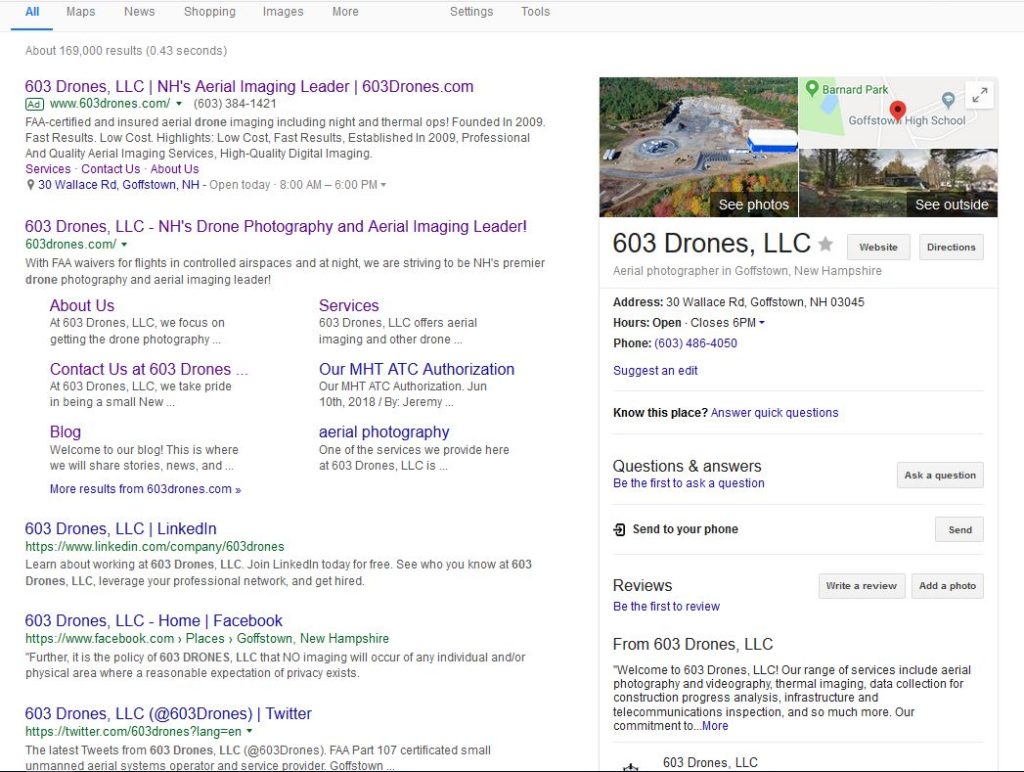How We’re Winning the Search Results Battle
603 Drones, LLC appears as the #1 or #2 listing in Google’s search results for several prime drone services-related keywords. These include the very important “nh drone photography” and “nh drone services” that statistics show are most-often searched for in our region. Additionally, amongst the top five search results, FOUR of them are national aggregator companies making us the ONLY New Hampshire-based business to appear so high in the rankings. So how have we accomplished this? Easy! With proper website structures, SEO management, and a focused social media and blog presence.
One of the expectations business owners have is that a properly-managed SEO campaign will automatically take care of your actual presence within the search results (i.e. how dynamic those results are). Unfortunately, however, this is not an assumption any business owner should make. There is still some back-end work you should be doing to give your customers the most complete information about your business in the most direct way.
Working within Google for this example, let’s walk through what a customer sees when they search for our business, 603 Drones, LLC:
As you can see above, there are a number of elements that are represented within these results. Each of these elements is controllable and configurable by you and your search engine optimizer.
What Do Your Customers See First?
The first listing you should see when doing a direct search for your business name is your OWN website – not a social media page, referral link site or business listings aggregating site. After all, you don’t want a customer to look for your business and then lose that potential conversion to a competitor because the result they click on gave them – ack! – choices.
Underneath your website listing, assuming that your website has been properly coded, you will see neatly listed and described summaries of different pages of your site. This is especially useful to potential clients because it allows them the opportunity to jump right to the page they are seeking without having to first navigate through your site. Remember, design for quick conversions and short attention spans!

Your “Google My Business” Snapshot
The next thing you want your customers to see is your Google Places information. Now, you’re a business owner so, of course, you’ve already created a Google My Business account, uploaded and updated all of your information, added photos, hours, services offered, etc…right? Right? If not, we would strongly encourage you to get the ball rolling on that.
One of the things that Google has been very clear about is the importance of using their My Business application. Their goal is to seamlessly integrate all of your Google-based activity into one comprehensive user experience. So take advantage of that! In this example, you can see a snippet of the last post we published on our My Business account. We’ve accomplished two things with this: Our search results now contain dynamic content that engages our customers before they even leave the results page and we are turning that engagement into increased traffic towards our site. Win-win!

Don’t Forget to Get Social!
Finally, the next several results that you want to see under a direct search for your business is as many of your social media channels as possible. Facebook, Twitter, LinkedIn, Instagram, etc. With frequent use of your social media channels, you can improve the ranking of content that is directly related to YOU, thereby providing customers with a better and more engaging search experience and hopefully turning those searches into sales.

As you can see, with the right application of time and effort, you can ensure that your customer engagement within Google’s search results page is as dynamic as possible.
Author: Jeremy
Jeremy Jones is the founder of 603 Media Group and 603 Drones, LLC. He is a FAA Part 107 pilot and has experience flying multiple Small Unmanned Aircraft System (sUAS) platforms in commercial applications. He is also versed in both state and federal regulations as they relate to commercial vs hobbyist sUAS operations and helps new remote pilots to navigate these very tricky subjects.




